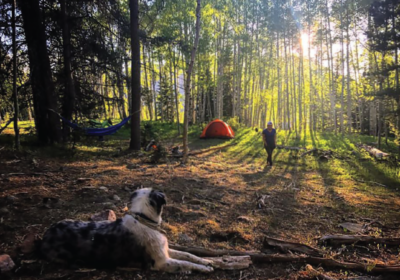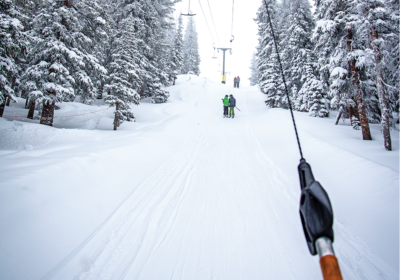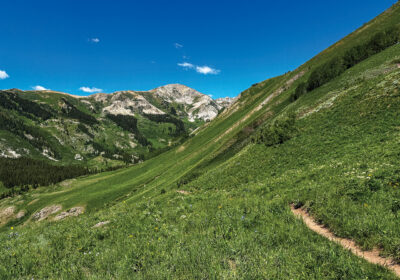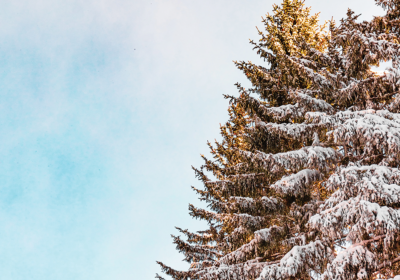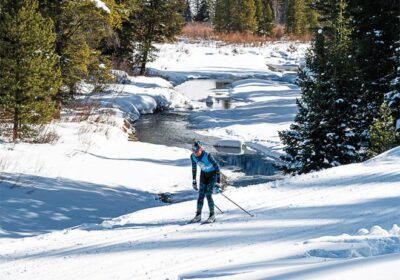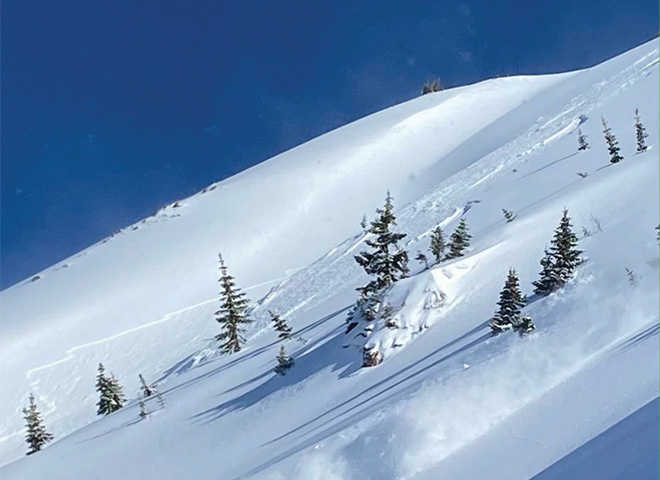
Staying Safe
“We don’t want to lose any more friends to avalanches”
[ by Than Acuff ]
Twelve years ago, while ski guiding in Italy, Jeff Banks and others were caught in an avalanche and Banks was swept 1,500 feet over cliff bands and through trees.
“We survived unscathed, but that was just luck,” says Banks. “I’ve had the privilege of the best avalanche training, mentorship, exams, and experience available in our country, and it wasn’t good enough. That avalanche 12 years ago was the real genesis of this project. I thought to myself, we gotta do better.”
Banks lives in Crested Butte and has been in the avalanche industry for 18 years as an avalanche forecaster, an educator and 16 years as an IFMGA certified mountain guide. That desire to “do better” took time to germinate. Now, after spending the past two years on development including 4,000 people hours, 80-plus hours of interviews and an immeasurable amount of additional research and input, Banks and partner JB Leach are on the cusp of releasing their new app called AspectAvy, developed to help people manage avalanche risk in the backcountry.
“We’re under no illusions that this is perfect, and it’s going to evolve over time, but we know it can bring massive harm reduction,” says Banks.
Banks and Leach pulled from a variety of sources including studies done by Nobel Laureate economists, NASA scientists, models developed regarding the application of avalanche data into decision making in Europe and hit the pavement for one-on-one interviews with backcountry users from the top of the avalanche education and guiding world to individuals just dipping their toes into winter backcountry recreation.
They took all of that, and more, developed their initial algorithm and put the first iteration of their app to the test last year both in the field and using thorough and consistent avalanche data available in Colorado and nationwide.
“We looked at avalanche fatalities in Colorado over the past 10 years and in the U.S. the past seven years because that was the furthest that consistent data we could use went back, and we determined that our app could have prevented 100-percent of those fatalities,” says Banks.
Banks refers to the “secret sauce” of the app as having three main ingredients. The first part is the algorithm they’ve developed that takes the information from the avalanche bulletin and overlays it on the map and the terrain to show the route for a low-risk tour.
“Low risk is similar to driving, 1 in 100,000 chance,” explains Banks. “High risk is a 1 in 100 chance, similar to base-jumping or free climbing with Alex Honnold.”
The second ingredient is the “coaching” part.
“Every professional athlete, every CEO has a coach,” says Banks.
The “coach” portion of the secret sauce takes users through the steps that should be taken by anyone venturing into avalanche terrain from the planning phase, to gear check, to beacon check, to monitoring route during the tour, confirmation at the top of the slope as well as a “debrief “after the tour that looks at the users entire tour day to let them know where things went well and where they strayed or need attention.
The third and final ingredient pre-diagnoses and treats the human factor traps based on personal info the user loaded into the app. That kind of info, while completely secure, is a big part of the success this app will have reducing avalanche related fatalities.
“It’s a brain dump,” says Banks. “Let tech do the heavy lifting for you. It brings a data driven approach to avalanche safety. Moneyball for the backcountry. And we need the community to load in their data so we can prevent more accidents.”
Banks and Leach are also looking for an “avalanche angel” investor. The app will cost $40, but they’re hoping to find someone that will cover the cost of the app for all search and rescue members.
“These are folks who put themselves in harm’s way and we want to help them stay safe,” says Banks.
In addition, they want to extend the offer to avalanche forecasters and avalanche center members to build a backcountry user community that will, again, help build more data for AspectAvy to utilize as they continue to update and improve the app.
“To really move the needle, we need the backcountry community,” says Banks.
The bottom line to all this effort with research, development and the use of technology is simple.
“It makes planning and executing a tour more fun and less stressful by having everyone on the same page,” says Banks. “We don’t want to lose any more friends to avalanches.”


